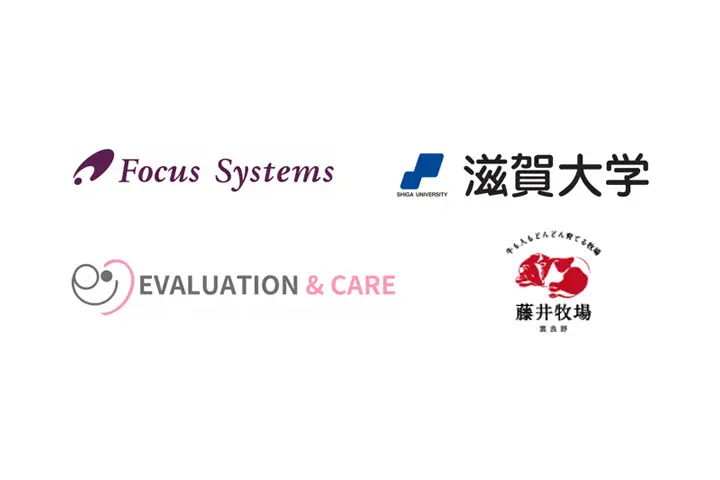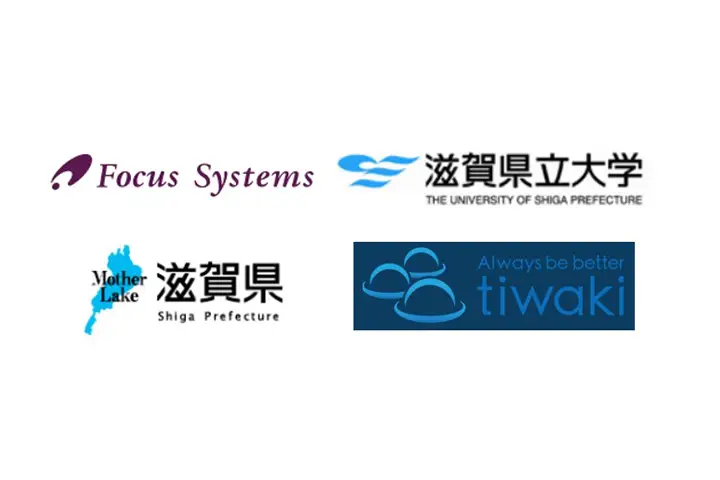Aiming for animal welfare through IT in dairy cow management



table of contents
Introduction: Aiming for milk production that is not only “tasty” but also “friendly to dairy cows”
We have begun a four-party industry-academia joint research project (hereinafter referred to as "this joint research project") with Eve Care Co., Ltd. (hereinafter referred to as "Eve Care"), Shiga University, a National University Corporation (hereinafter referred to as "Shiga University"), and Fujii Farm Ltd. (hereinafter referred to as "Fujii Farm"), with the aim of developing a stress assessment and management system for dairy cows to contribute to farm management that contributes to animal welfare.
Background: The importance of reducing stress and disease in livestock
Animal welfare is defined as "an animal's physical and mental condition*1 related to the environment in which it lives and dies," and in Japan, the Ministry of Agriculture, Forestry and Fisheries recommends that livestock be treated to reduce stress and reduce stress in a comfortable breeding environment. Guidance has been given that it is important to reduce disease.
Building a breeding environment that supports the concept of animal welfare and reducing stress and epidemics in livestock not only leads to the production of safe and secure livestock products, but also reduces costs such as treatment costs and improves production for producers. This will lead to improved sexual performance.
We agree with this guideline and aim to create new value by producing milk that is not only delicious but also kind to dairy cows and by creating a production environment.
(*¹) Recommendations of the World Organization for Animal Health (OIE, an intergovernmental organization that aims to improve animal health around the world)
Content: Towards the realization of milk stress evaluation that “does not drain blood”
As a first step in this joint research, we will utilize Evecare's "quantitative analysis technology for stress-related hormones in milk" to examine the possibility that the concentration of stress hormones in milk can serve as an index for daily stress evaluation of dairy cows. to hold.
Currently, one method to evaluate stress in dairy cows is to measure the stress hormone concentration in the blood, but blood sampling places a heavy burden on dairy cows, so ranchers are using it as an indicator of daily stress. It is considered difficult.
Although there are studies that have proven that stress-related hormones can be analyzed from milk, the correlation with the same hormones in the blood is not stable, and it is not clear what kind of stress it reflects. .
In this joint research, we will quantitatively measure stress-related hormones in milk and investigate the relationship with multiple indicators, including the correlation with the concentration of the same hormone in the blood. We look for the possibility that hormone concentrations can serve as a tool for daily stress assessment.
In order to evaluate animal welfare, we use 1) empirical evaluation by producers, 2) evaluation of behavioral indicators of livestock based on animal behavior, and 3) analysis of autonomic nerves and hormones based on physiological and biochemical knowledge. I listed three important items: stress evaluation.
Among these items, Fujii Farm conducts behavioral evaluation based on empirical evaluation of producers and animal behavior, and stress evaluation through autonomic nerve and hormonal analysis based on physiological and biochemical knowledge is carried out by the four parties. We will systemize the integrated results of the three evaluation items conducted by Evecare and Shiga University and implement the IoT implementation of the evaluation.
Expectations: Creating a dairy cow-friendly production environment
As this joint research progresses, it will become possible to evaluate the stress of dairy cows while minimizing their stress, which is expected to lead to the production of milk that is both "cow-friendly" and "tastier."
In addition, we will utilize the IT knowledge we have cultivated to date to expand the scope of our challenges so that we can connect this to industrial innovation.
*The names of our products and services posted on this page are trademarks or registered trademarks of our company. Other company names, product names, service names, etc. are trade names, trademarks, or registered trademarks of each company.
Achievements left behind
48 years since its establishment.
We have a proven track record because we have focused on what is important.
It has a long track record in both the public and private sectors.
Number of projects per year
500 PJ
Annual number of business partners/customers
200 companies
Maximum number of trading years
47 years
Total number of qualified persons
1,870 people

